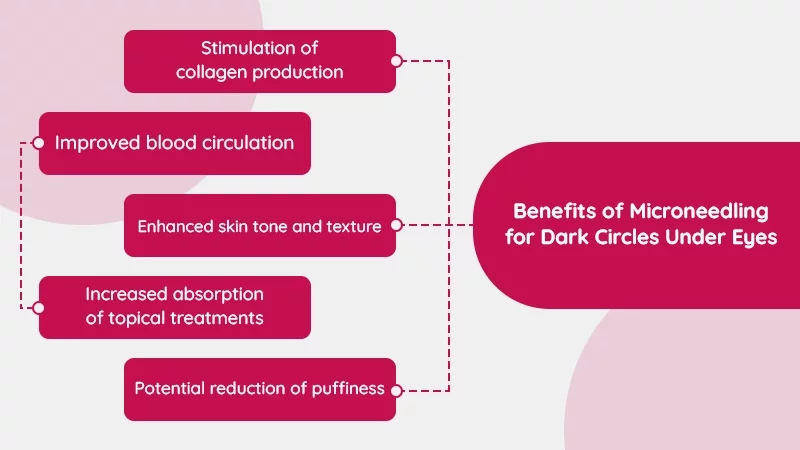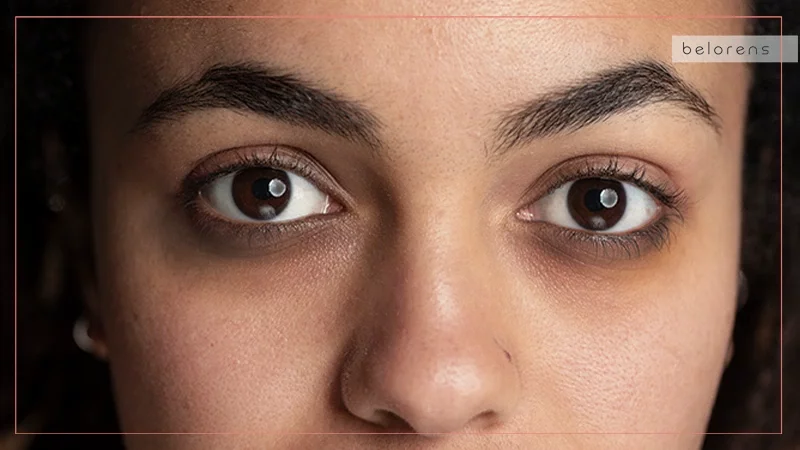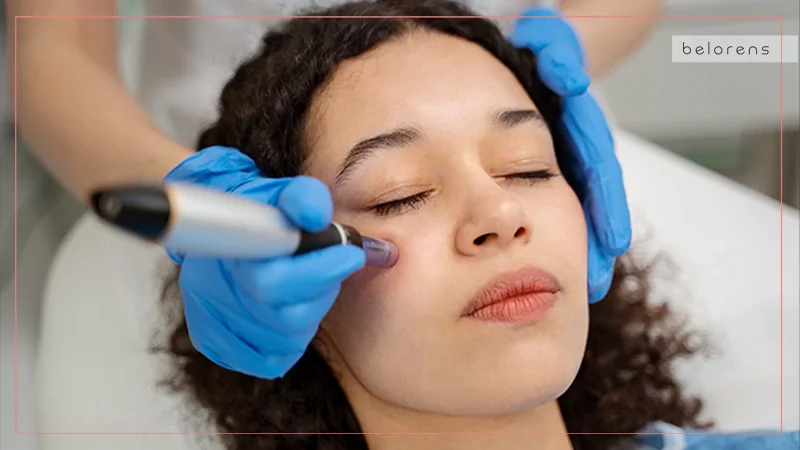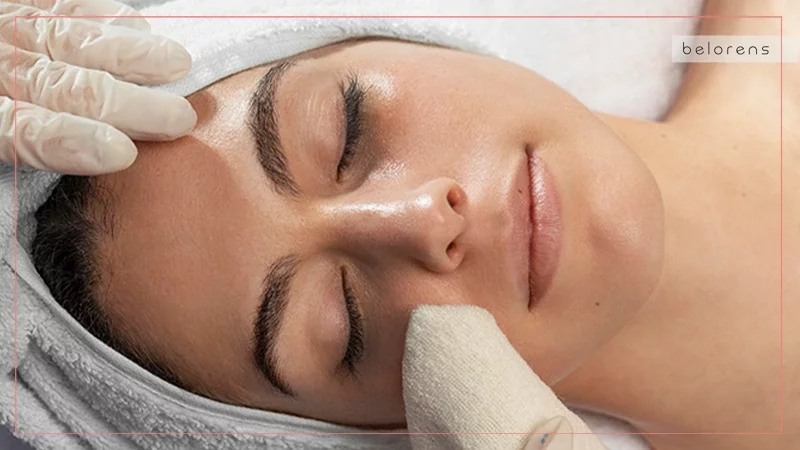Published on 21 July 2024
Microneedling for Dark Circles Under the Eyes: Does It Work?
- ByMedical Content Team
- Medically Reviewed byDr. Sabine Kulhanek
Fact checked

Dark undereye circles are a persistent cosmetic concern that affects countless individuals, often giving a fatigued and aged appearance. These circles can result from a variety of factors, such as genetics, aging, lifestyle habits, and medical conditions. Despite the plethora of creams, serums, and home remedies available, many find it challenging to achieve significant improvement.
For those seeking more effective solutions, there are several advanced treatments to consider. Options range from laser therapy and chemical peels to dermal fillers, each with its own set of benefits and drawbacks. Among these emerging treatments is microneedling, which has garnered attention for its potential to rejuvenate the skin and address various dermatological issues.
In this blog post, we will delve into whether microneedling can help with dark undereye circles. We'll explore how this treatment works, its potential benefits, and insights from both scientific research and personal experiences.
What is microneedling?
Microneedling, also known as collagen induction therapy, is a minimally invasive cosmetic procedure aimed at improving the appearance and texture of the skin. It involves using a device equipped with fine needles to create tiny, controlled punctures on the skin’s surface. These micro-injuries trigger the body’s natural wound-healing process, leading to increased production of collagen and elastin, two essential proteins for maintaining skin firmness and elasticity
How does microneedling help with dark under-eye circles?

Dark under-eye circles can be a stubborn and frustrating issue, often caused by a combination of genetics, aging, lifestyle factors, and even medical conditions. Microneedling has emerged as a promising treatment for this concern due to its ability to rejuvenate and repair the delicate skin around the eyes. Here’s the benefits of microneedling for dark circles under the eyes:
Stimulation of collagen production
One of the primary benefits of microneedling is its ability to stimulate the production of collagen and elastin. These proteins are crucial for maintaining the skin’s firmness and elasticity. As we age, the production of collagen slows down, leading to thinner skin and the more pronounced appearance of blood vessels and pigmentation under the eyes. By promoting collagen synthesis, microneedling helps to thicken the skin, which can reduce the visibility of dark circles.
Improved blood circulation
Microneedling also enhances blood circulation in the treated area. Poor blood flow can contribute to the development of dark under-eye circles, as it can lead to pooling of blood and fluids in the delicate under-eye skin. The micro-injuries caused by microneedling promote better blood flow, which can help in reducing the dark, bluish hue often seen under the eyes.
Enhanced skin tone and texture
The controlled micro-injuries created during a microneedling session trigger the skin’s natural healing process, which can lead to an overall improvement in skin tone and texture. This healing process helps in reducing hyperpigmentation and can lighten the dark areas under the eyes over time, giving the skin a more even and radiant appearance.
Increased absorption of topical treatments
Microneedling creates tiny channels in the skin, which can enhance the absorption of topical treatments applied immediately after the procedure. This increased absorption allows for better penetration of products specifically designed to lighten and rejuvenate the under-eye area, such as serums containing vitamin C, hyaluronic acid, and peptides. These ingredients can work more effectively to reduce pigmentation and hydrate the skin, further diminishing the appearance of dark circles.
Potential reduction of puffiness
In addition to addressing pigmentation, microneedling can also help reduce under-eye puffiness. The improved blood circulation and lymphatic drainage facilitated by the treatment can decrease fluid retention, which is often a contributing factor to puffy eyes and the shadowing effect that exacerbates the appearance of dark circles.
How is microneedling for under eyes done?
Microneedling for the under-eye area is a delicate procedure that requires precision and care. Here’s a step-by-step overview of how it is typically performed:
Step 1: Consultation and preparation
Before undergoing the procedure, it’s important to have a consultation with a dermatologist or a trained skincare professional. They will assess your skin condition, discuss your goals, and determine if microneedling is suitable for your under-eye concerns.
On the day of the procedure, the area around the eyes will be thoroughly cleaned to remove any makeup, oils, and impurities. This ensures that the skin is ready for treatment and helps prevent infections.
Step 2: Numbing
Given the sensitivity of the under-eye area, a topical numbing cream is usually applied to minimize discomfort. The cream is left on for about 15-30 minutes to take effect.
Step 3: Microneedling procedure
The practitioner will use a microneedling device, which can be a derma roller or a motorized pen-like device with fine needles. The needle length is typically adjusted to a shorter setting for the delicate under-eye skin.
The microneedling device is gently and carefully rolled or stamped over the under-eye area. The practitioner makes sure to cover the entire target area evenly. The procedure creates tiny, controlled punctures in the skin, stimulating the body’s natural healing response.
Step 4: Post-treatment application
Immediately after the microneedling session, serums or topical treatments rich in vitamins and hyaluronic acid may be applied to the treated area. The microchannels created by the needles enhance the absorption of these products, maximizing their effectiveness.
A soothing, cooling mask or gel may be applied to reduce any redness or irritation and to promote healing.
Are there any preparation guidelines?

Preparing for a microneedling session, especially for the delicate under-eye area, is crucial to ensure the procedure's success and minimize potential risks. Here are some key preparation guidelines to follow:
Consultation and skin assessment
Before your appointment, have a thorough consultation with a dermatologist or a trained skincare professional to evaluate your skin type, discuss your concerns, and determine if microneedling is the right treatment for you.
The practitioner will assess the condition of your under-eye skin to identify any specific issues or contraindications that might affect the treatment.
Avoid certain products and treatments
Discontinue the use of retinoids, alpha hydroxy acids (AHAs), beta hydroxy acids (BHAs), and other exfoliating or irritating skincare products at least 3-5 days before the procedure. These products can increase skin sensitivity and irritation.
You also need to avoid other skin treatments, such as chemical peels, laser treatments, or waxing, in the week leading up to your microneedling session.
Sun exposure and tanning
Protect your skin from excessive sun exposure and avoid tanning beds for at least two weeks before the procedure. Sunburned or tanned skin can be more sensitive and prone to damage during microneedling. Apply a broad-spectrum sunscreen with at least SPF 30 daily to protect your skin from UV rays.
Hydration and health
Drink plenty of water in the days leading up to your appointment to keep your skin well-hydrated. Hydrated skin responds better to treatment and heals more efficiently.
Maintain a healthy lifestyle, including a balanced diet, adequate sleep, and stress management, to support overall skin health.
Avoid blood thinners
Inform your practitioner of any medications or supplements you are taking. Avoid blood-thinning medications and supplements (such as aspirin, ibuprofen, and vitamin E) for at least a week before the procedure, as they can increase the risk of bruising and bleeding.
Avoid alcohol and smoking
Refrain from consuming alcohol for at least 24 hours before your appointment, as it can increase the risk of bruising and swelling.
If possible, also avoid smoking in the days leading up to your treatment, as smoking can impair the skin's healing process and reduce the effectiveness of the treatment.
Clean skin
On the day of your appointment, cleanse your face thoroughly and avoid applying any makeup, moisturizers, or other skincare products to the treatment area.
Mental preparation
Have a clear understanding of the procedure, its potential benefits, and the expected outcomes. Discuss any concerns or questions with your practitioner to ensure you have realistic expectations.
Aftercare for under eyes following microneedling

Proper aftercare is crucial to ensure optimal results and minimize potential side effects following a microneedling session, especially for the delicate under-eye area. Here are the essential steps for post-treatment care:
Immediate aftercare
Use a gentle, non-irritating cleanser to wash your face, especially the under-eye area. Avoid harsh scrubbing and pat your skin dry with a clean, soft towel.
Apply a soothing, hydrating serum or cream recommended by your practitioner. Products containing hyaluronic acid can be particularly beneficial for keeping the skin moisturized.
Avoiding sun exposure
Protect the treated area from direct sun exposure. Use a broad-spectrum sunscreen with at least SPF 30, even on cloudy days. Reapply every two hours if you're outdoors.
Consider wearing sunglasses and a wide-brimmed hat when going outside to provide extra protection from UV rays.
Skincare routine adjustments
For the first 24-48 hours, avoid using skincare products containing active ingredients like retinoids, AHAs, BHAs, vitamin C, and other potentially irritating substances. Instead, keep the under-eye area well-moisturized with a gentle, fragrance-free moisturizer to support the healing process and maintain skin hydration.
Also, refrain from applying makeup to the treated area for at least 24-48 hours post-treatment to prevent irritation and infection.
Managing discomfort and redness
If you experience swelling or discomfort, apply cold compresses or ice packs wrapped in a soft cloth to the under-eye area for short intervals. This can help reduce inflammation and soothe the skin.
If necessary, you can take over-the-counter pain relievers like acetaminophen to alleviate any discomfort, but avoid aspirin and ibuprofen as they can increase the risk of bruising.
Hydration and nutrition
Drink plenty of water to keep your skin hydrated from within, which aids in the healing process. Additionally, eat a balanced diet rich in vitamins and minerals to support skin repair and overall health.
Follow-up care
Keep an eye on the treated area and note any unusual reactions or prolonged irritation. Mild redness and sensitivity are normal but should subside within a few days.
It is recommended to attend any scheduled follow-up appointments to assess your progress and discuss any concerns with your practitioner. They can provide additional guidance tailored to your skin's needs
Long-term care
Once your skin has healed, maintain a consistent skincare routine that includes gentle cleansing, moisturizing, and sun protection to preserve the results.
Depending on your skin's response and your practitioner's recommendations, you may need multiple microneedling sessions to achieve optimal results. Follow their advice on the appropriate intervals between treatments.
Also Read: Aging Eyes: 5 Common Signs and How to Reverse Them
How much does it cost?

The cost of microneedling for the under-eye area can vary based on several factors, including the location of the clinic, the expertise of the practitioner, the specific equipment used, and any additional treatments or follow-up sessions included in the package.
On average, a single session of microneedling under the eyes can cost between $100 and $300. The price may be higher in major metropolitan areas or at high-end clinics. Many clinics offer package deals for multiple sessions, which can be more cost-effective. A package of 3 to 6 sessions might range from $300 to $1,500, depending on the clinic and the number of treatments included. See the best skincare clinics and book your consultation now!

